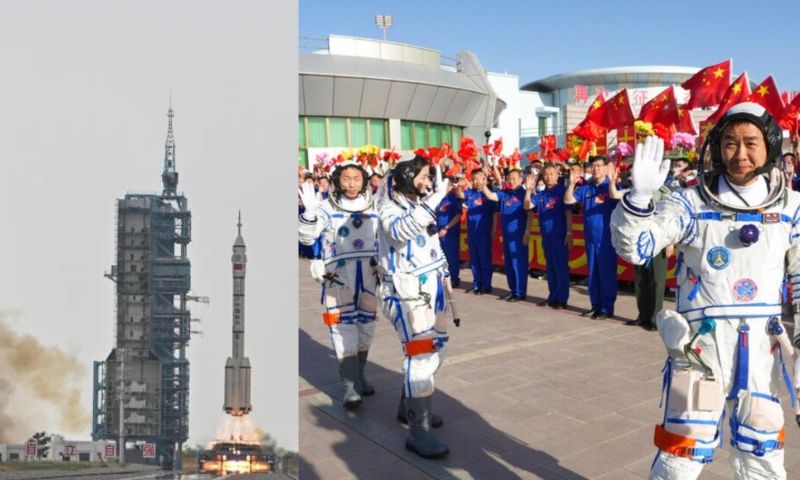BEIJING: China sent three astronauts on Tuesday as part of staff rotation to its now fully operational space station, the fifth human-crewed mission to the Chinese space outpost since 2021.
According to Reuters, the Shenzhou-16, also known as the “Divine Vessel,” spacecraft and its three passengers were sent at 9:31 a.m. (0131 GMT) from the Jiuquan Satellite Launch Centre in the Gobi Desert in northwest China atop a Long March-2F rocket.
The three-person Shenzhou-15 crew, who arrived at the space station in late November, will be replaced by the astronauts on board Shenzhou-16.
After 11 crewed and uncrewed missions since April 2021, starting with the launch of the first and most extensive module, the station’s primary living quarters, which consist of three modules, were completed at the end of the previous year.
The next module will dock with the current T-shaped space station to form a cross-shaped structure. China has already made plans to grow its permanently occupied space base.
Jing Haipeng, 56, a senior spacecraft pilot from China’s first class of astronaut trainees in the late 1990s, was in charge of the Shenzhou-16 mission. Before this, he had made three journeys to space, including two as the mission commander.
Jing went alongside Zhu Yangzhu and Gui Haichao, two 36-year-old astronauts from China’s third astronaut group. Zhu and Gui are taking part in their maiden space mission.
While Gui, a professor at Beihang University, will manage science experiments in the space station as the mission’s payload specialist, former military university professor Zhu will serve as the mission’s spaceflight engineer.
Beijing will launch another crewed mission to the orbiting outpost the same year. China is also due by the end of 2023 to establish a space telescope that is equal to a large bus.
The orbiting telescope, known as Xuntian, or “Surveying the Heavens” in Chinese, will have a field of view 350 times larger than that of the Hubble Space Telescope, which was put into orbit 33 years ago.
























